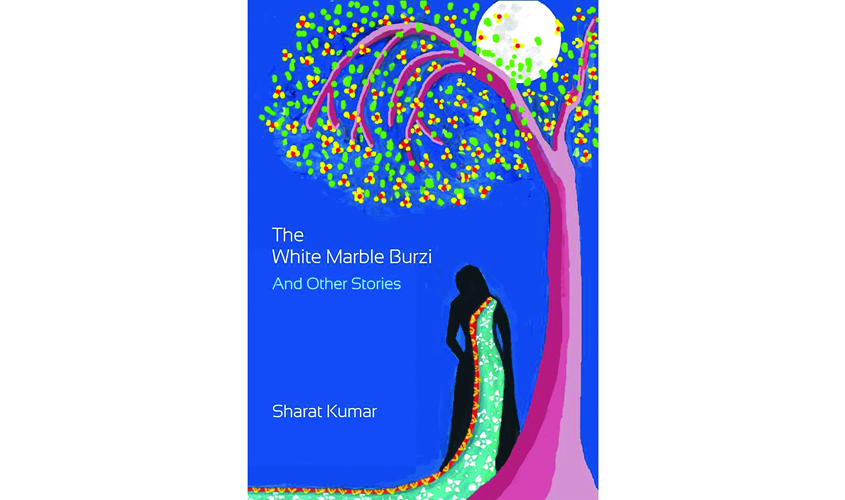The White Marble Burzi and Other Stories
By Sharat Kumar
Publisher: Aakar Books
Pages: 160
Price: Rs 350
In his preface to the collection of stories titled The White Marble Burzi and Other Stories, Sharat Kumar says that of the three principal areas of human life — physical, intellectual and emotional — the last “…exercises permanent influence on the quality of a person’s life”. Emotions can never be dealt with simplistically because they can often be rather complex, at times even conflictual. To quote him, “Any creative approach to deal with and refine them can perhaps only be made in the language of the arts, and fictional works are the primary route to that subterranean self.” This reviewer agrees with the observation except perhaps words like “unconscious” or “subconscious” would be a better option as compared to the word “subterranean”, which has a rather gloomy connotation.
Some of the stories remind one of Impressionist paintings. The same scene can be viewed from different perspectives, depending on what one is looking for and what one’s emotional quotient is. “The Return Journey”, the shortest story in the collection, paints a scene which many of us have seen before — the NRI son trying to balance between his fond but rustic parents and white wife — but have never realised the powerful interplay of emotions that underlies it.
The title story is a good read, though a trifle decadent. It leaves one asking a question. Should one live in the dreams of a past which can never come back to life? Or should one simply be dismissive of it and say “sab jhootha hai [everything is false]” like the watchman in “The Hungry Stones” (a story by Tagore and a film based on it), and get along with life however mundane?
There is something eerie about “My Life”. As the protagonist visits his old and ailing mother in the hospital, his thoughts oscillate between life and death, past and present. As he wishes something would disturb the silence in the corridor of the ward, the reader feels the cold presence of death slowly creeping in. A story need not have a definite plot, a beginning, a middle and an end, not even well-defined characters. A deeply felt experience, vividly recounted, is enough as one realises after reading “Saturday Sunday”.
A relationship between two individuals works when they respond to each other’s emotional needs. Insensitivity, even if inadvertently expressed, can result in disaster as one sees in the story “Florence”, which is a finely drawn picture of the Anglo-Indian community in India. What one appreciates most in it are the subtle strokes that suggest what caused the tragic accident rather than directly narrate it. One is haunted by Robert’s agony long after one has finished reading the story. On the other hand, the “cool” and uninvolved nature of the relationship in “The Affair” is something that one cannot relate to, maybe because there is no emotional
commitment.
“An Unfinished Story” is one of the most intriguing and tantalising stories in the collection. The narrator meets Paul who sells his apple orchard to him, and they have a philosophical conversation over chaang and dinner. Why was he selling the orchard and the cottage? Paul said he could not bear to stay there any longer as Sandhya who had designed it and had been in a relationship with him, had gone away. The place reminded him so much of her that he could not bear to stay there. Two months later, when the narrator returned to the orchard, he found a short note from Paul at the agent’s office telling him about the letters between him and Sandhya that were lying there. He could do whatever he liked with them except send them back to Paul. The story of Sandhya and Paul that comes across through the letters hints at a relationship that is intense, but there are moments of diffidence and the danger of drifting from each other and finally a breakup. There is something deeply disturbing about the concluding story “The Storm”, which one feels focuses on the shades of grey in human nature. Sometimes, certain compulsions/circumstances make one behave in a way that one might regret later but of course, by then it is too late. The overwhelming desire to talk about it, the Ancient Mariner syndrome, is again very human. By “confessing” the person feels that he or she has absolved oneself.
Altogether, the stories make the reader sit up and think, about the characters, what they are going through, why they have behaved in such a way. The variety of emotions, reactions and interactions makes for interesting reading. The language is simple and evocative and the characters come across as human beings sometimes with weak points, which have made them behave in a certain way. And most of the time the reader relates to them, something that goes to the credit of the author.

